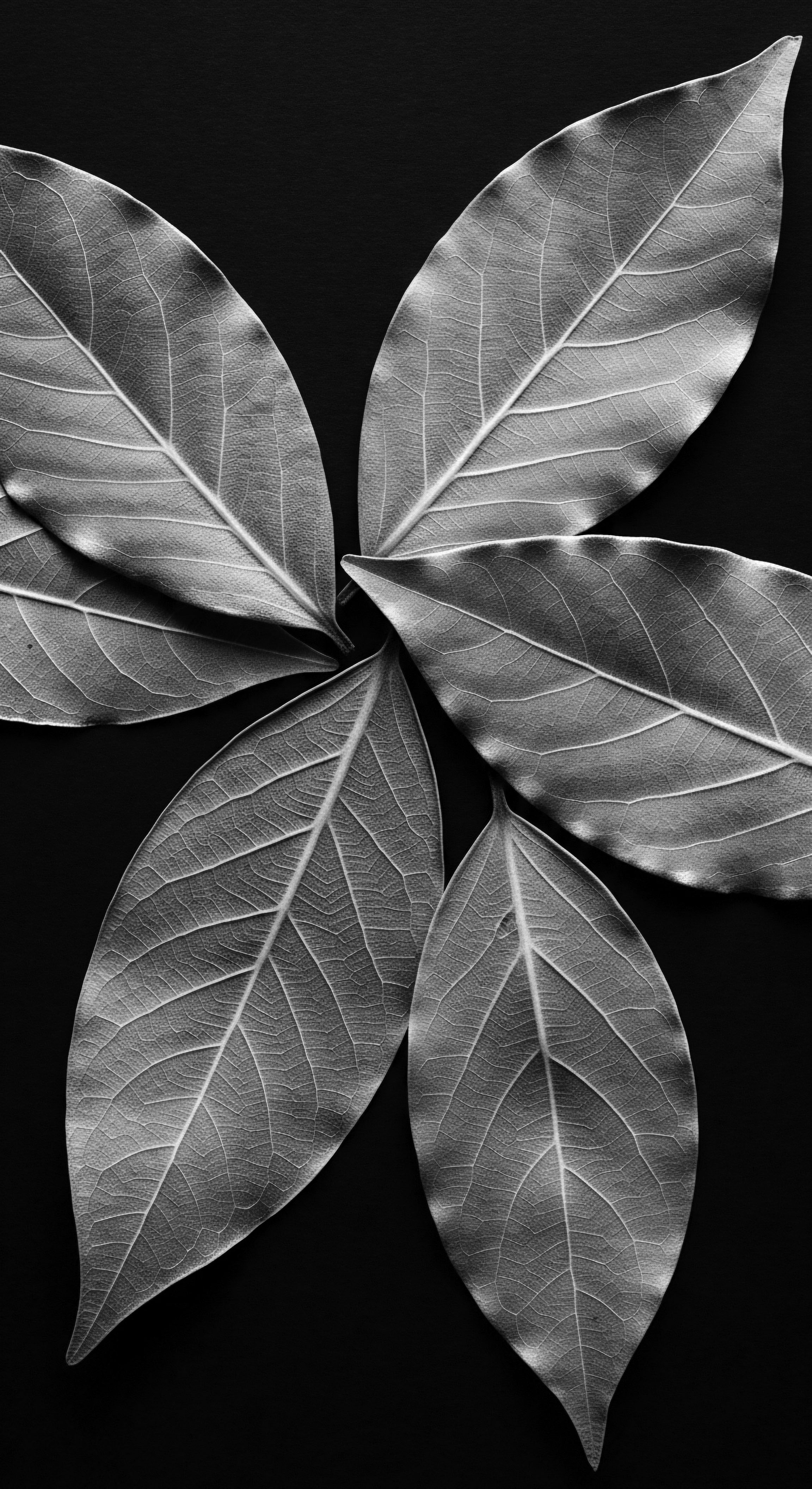
Roots
The whisper of generations, the echo of hands that once braided stories into strands—this is where our exploration begins. For those whose hair speaks a language of coils and curves, of resilient texture, the question of ancestral oils is not merely about ingredients; it is a profound query into heritage itself. It asks what ancient wisdom, what botanical allies, continue to nourish the very soul of a strand, connecting us to a lineage of care that stretches back through time, across continents, and into the heart of collective memory. This is an invitation to listen to the silent narratives held within each curl, to understand the foundational relationship between textured hair, its biological blueprint, and the remedies our forebears knew by touch and intuition.
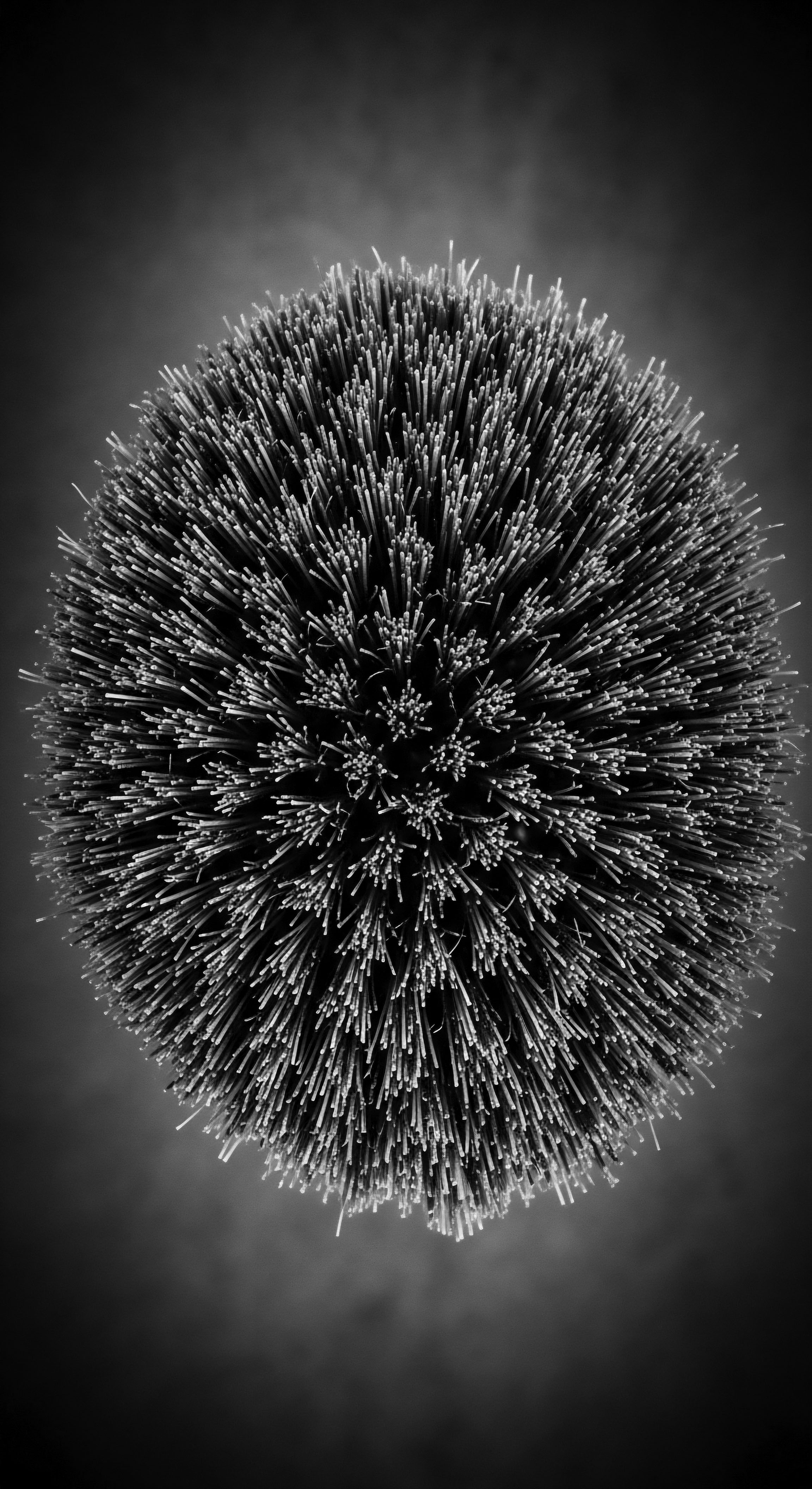
What Defines Textured Hair’s Ancestral Structure?
Textured hair, particularly that of Black and mixed-race individuals, possesses a unique architecture. Unlike straight hair, which typically emerges from a round follicle, coiled strands often grow from elliptical or oval-shaped follicles. This distinct follicular shape influences the hair shaft’s elliptical cross-section, contributing to its characteristic curl pattern and, significantly, its inherent fragility. The points where the hair bends and twists along its helical path are areas of reduced strength, making it more prone to breakage if not handled with mindful care.
This inherent structure also means that natural oils produced by the scalp, sebum, struggle to travel down the spiraling strand, leading to dryness at the ends. Ancestral practices understood this dryness, instinctively reaching for external emollients to compensate.
Consider the hair growth cycle, a biological rhythm that dictates the life of each strand. It unfolds in phases ❉ anagen (active growth), catagen (transition), and telogen (rest). While universal, environmental factors and nutritional intake have historically influenced these cycles. In many ancestral communities, diets rich in plant-based nutrients, often cultivated from local lands, would have provided essential building blocks for hair health.
The careful application of oils became a way to support the hair during its active growth and protect it during its resting phases, minimizing breakage and promoting length retention. (Guo & Wang, 2017)
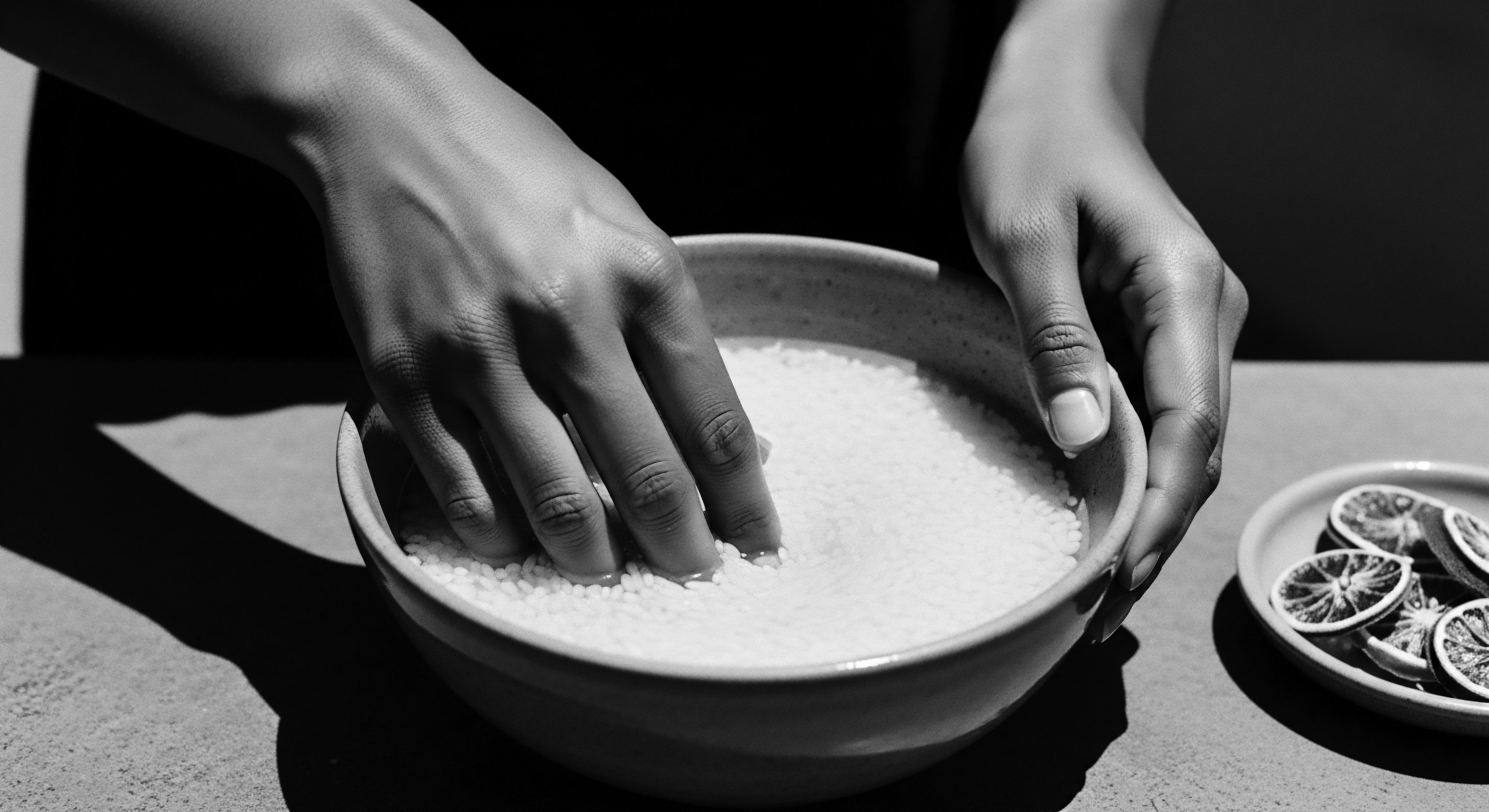
How Did Early Peoples Classify Hair?
Before modern classification systems, understanding hair was deeply rooted in cultural context and visual observation. In pre-colonial African societies, hair was a powerful communicator of identity, status, age, and even marital status. Hairstyles, and by extension, the health of the hair, were not merely aesthetic choices; they were living narratives. (Dabiri, 2020) The oils and butters used were selected for their ability to allow for these intricate styles, to provide pliability, and to protect the hair from environmental elements.
The knowledge of specific plant properties was often passed down through oral traditions, mother to daughter, generation to generation. This deep, experiential understanding formed the basis of what we might now call an ethnobotanical codex for hair care. The texture itself, whether tightly coiled or more loosely curled, would dictate the frequency and type of oiling, a practical application of empirical knowledge refined over centuries.
Ancestral oils represent a living lineage of botanical wisdom, deeply intertwined with the unique biology and cultural narratives of textured hair.
This traditional knowledge, often dismissed or undervalued in Western contexts, is increasingly validated by contemporary science. Ethnobotanical studies now explore the plant-derived compounds and natural products used in historical hair treatments, examining their mechanisms of action and potential benefits for scalp and hair health. (Mouchane et al. 2023)
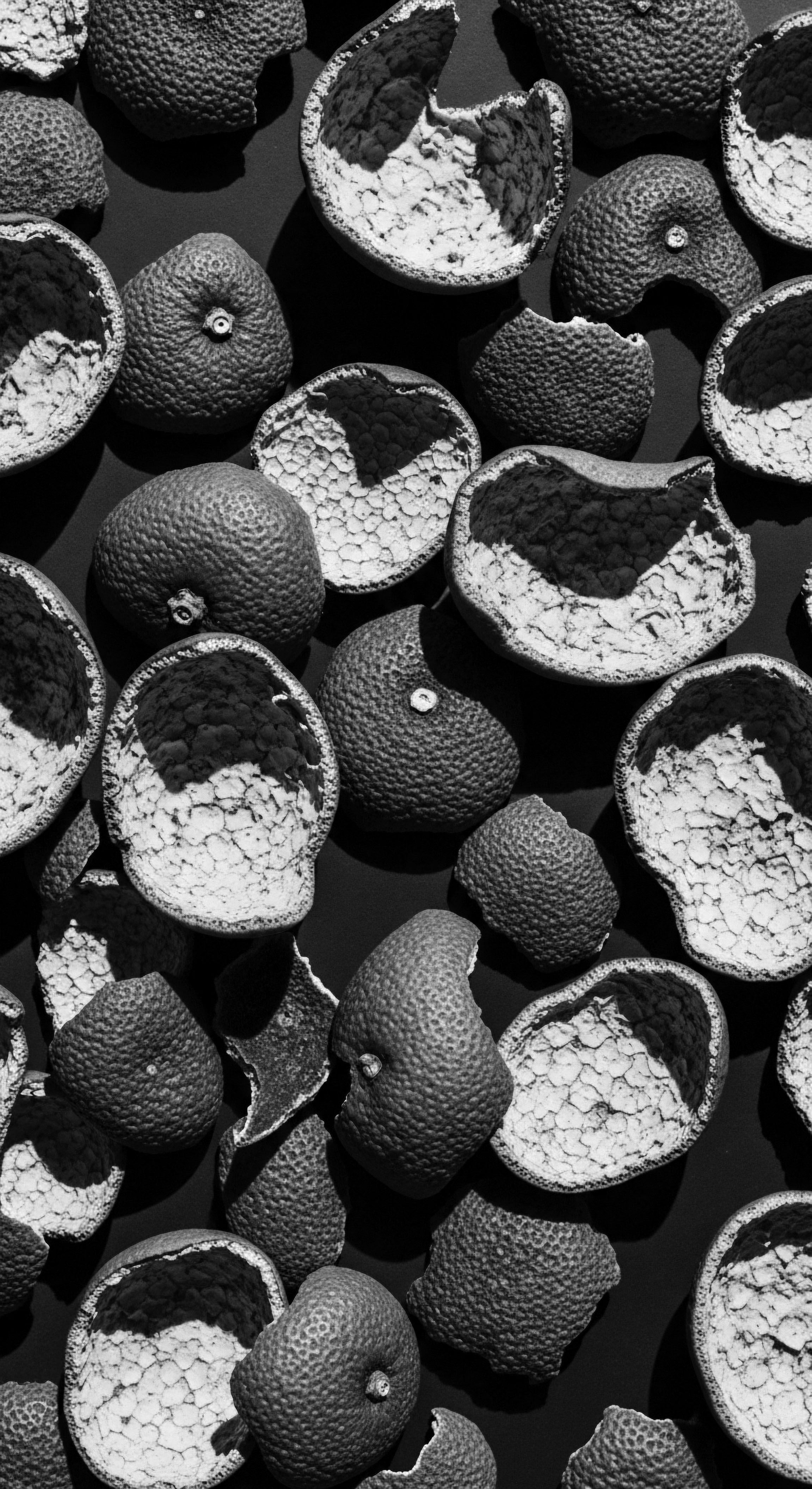
Ritual
As we turn from the foundational understanding of textured hair, a more expansive vista opens—one where the simple act of oiling transcends mere application and transforms into ritual. For those who seek a deeper connection to their hair’s story, understanding the ancestral oils is to walk alongside the hands that once prepared them, to feel the gentle rhythm of care that defined communities. This is not just about what oils were used, but how they were woven into daily life, into the very fabric of identity and collective memory. It’s about recognizing the profound impact of these practices, shaping not only the physical strands but also the spirit of resilience carried within each curl.
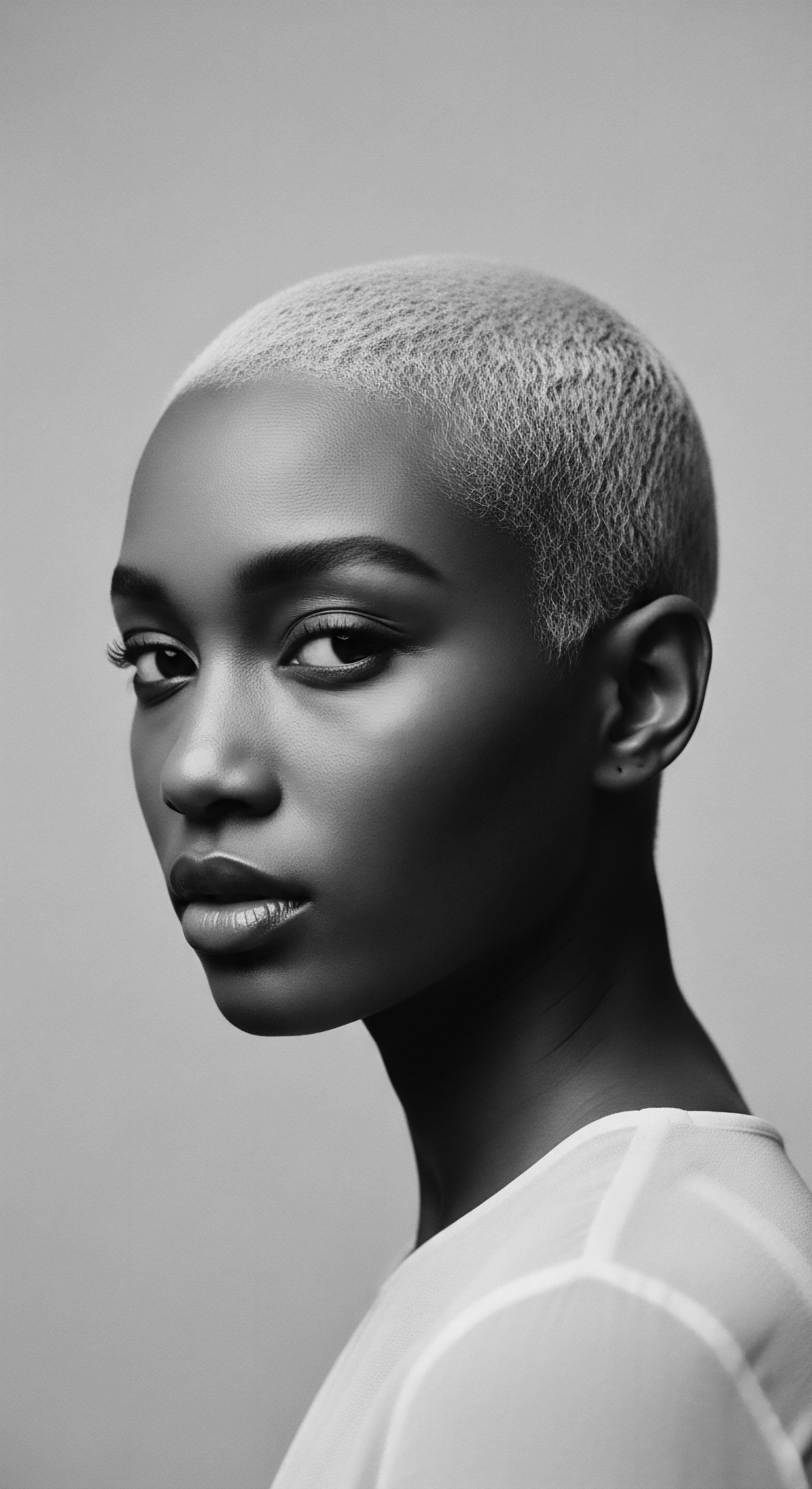
What Ancestral Oils Still Nourish Textured Hair Today?
From the sun-drenched savannahs to the vibrant Caribbean shores, a collection of ancestral oils and butters continues to offer profound nourishment for textured hair. These are not simply random botanicals; they are selections honed by generations of observation and tradition, each carrying its own unique properties and historical significance.
- Shea Butter ❉ Extracted from the nuts of the Vitellaria paradoxa tree, indigenous to West Africa, shea butter is perhaps the most celebrated. For over two millennia, it has been revered as “Women’s Gold,” used not only for hair and skin protection against harsh climates but also in cooking and healing. (Beauty Garage, 2024) Its rich content of fatty acids, vitamins, and minerals provides deep moisture, reduces frizz, and guards against environmental stress. (Beauty Garage, 2024) The traditional process of hand-kneading the roasted and ground nuts to extract the butter speaks to the labor of love embedded in its heritage. (Beauty Garage, 2024)
- Castor Oil ❉ While the castor plant (Ricinus communis) has roots in ancient Egypt and Africa, its prominence in textured hair care, particularly Jamaican Black Castor Oil (JBCO), is deeply rooted in Caribbean culture. Enslaved Africans brought the castor plant and its traditional uses to the Americas. (Urban Hydration, 2023) JBCO, processed through a traditional roasting method, is celebrated for its thick consistency and its ability to promote hair growth, enhance blood circulation to the scalp, and nourish hair follicles with omega-6 and omega-9 fatty acids and vitamin E. (Husn Beauty, 2024) Haitian Castor Oil, known as “lwil maskrit,” has a history of use in Haiti dating back to 1625, predating JBCO’s widespread use. (Caribbean Secrets Cosmetics Store, 2022)
- Palm Oil ❉ While its contemporary use has faced scrutiny due to sustainability concerns, palm oil, derived from the fruit of the oil palm tree, holds historical significance in various African communities. It was traditionally used for its conditioning properties and its role in many daily practices, reflecting its abundance and versatility. Its deep orange hue, rich in beta-carotene, suggests a connection to its nutritional density.
- Coconut Oil ❉ A staple across many tropical regions, including parts of Africa and the Caribbean, coconut oil has been used for centuries for its ability to penetrate the hair shaft, providing moisture and reducing protein loss. Its protective qualities were recognized in traditional hair care routines, particularly in communities where exposure to sun and water was common. (Rele & Mohile, 2003)
- Jojoba Oil ❉ Though its origins lie in indigenous American cultures, jojoba oil found a significant place in Black beauty rituals, especially during the “Black is Beautiful” movement of the 1970s. Its unique molecular structure, closely mimicking the scalp’s natural sebum, made it ideal for addressing dryness and breakage in textured hair. (BeautyMatter, 2025) Its rise was a deliberate act of resistance against Eurocentric beauty ideals, favoring natural, indigenous solutions. (BeautyMatter, 2025)
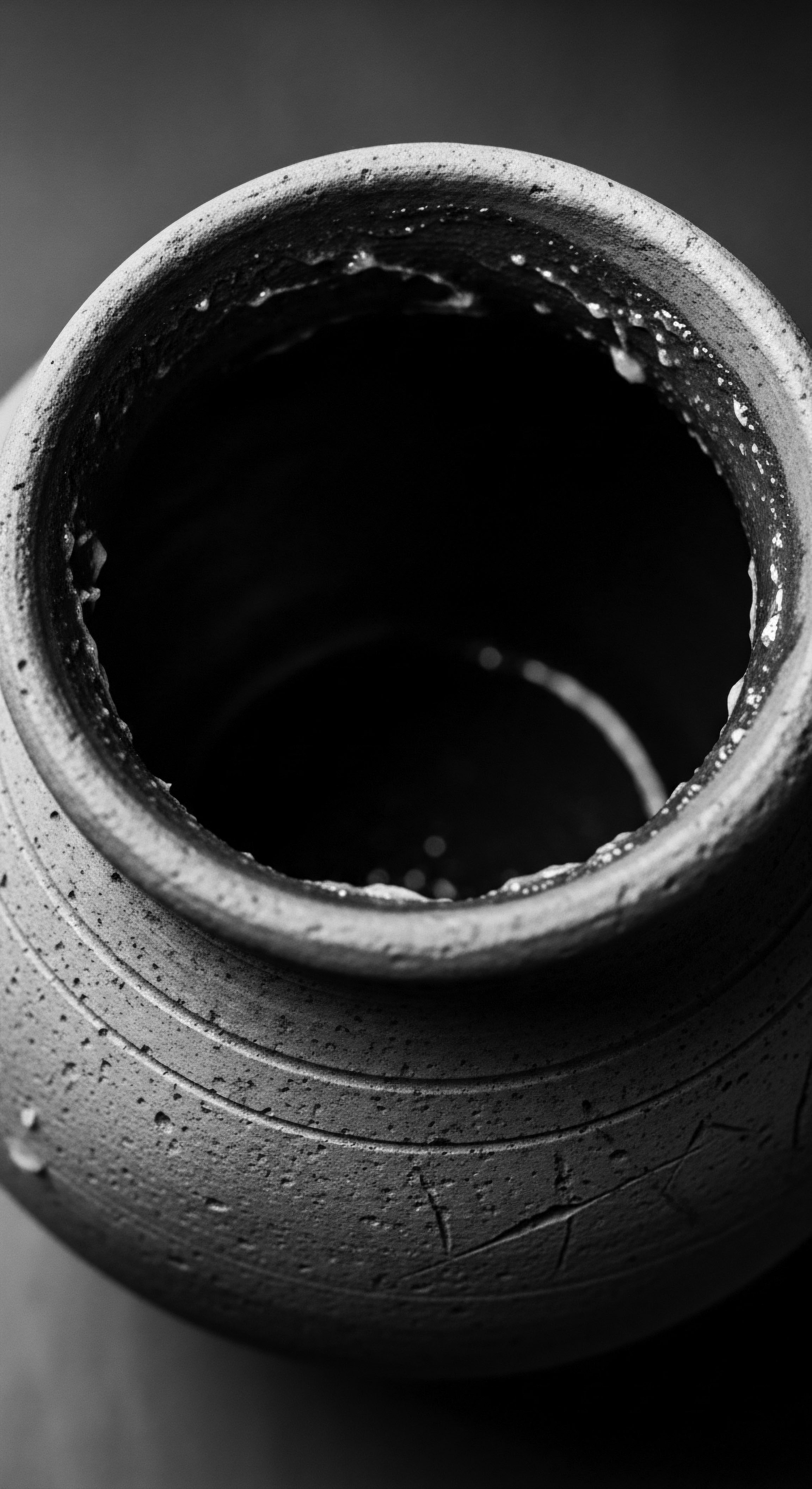
How Did Ancestral Communities Apply Oils?
The application of these oils was rarely a solitary, quick affair. It was often a communal activity, a time for bonding, storytelling, and the transmission of wisdom. In many African cultures, mothers, daughters, and friends would gather, braiding and styling hair, a process that strengthened social ties while preserving cultural identity. (Afriklens, 2025)
Oiling was integral to protective styling, a practice deeply rooted in African hair heritage. Styles like cornrows, twists, and Bantu knots, which date back thousands of years, were not only aesthetic expressions but also served to shield the hair from environmental damage, reduce manipulation, and retain moisture. (Afriklens, 2024; Afrocenchix, 2018) The oils provided the necessary lubrication and conditioning to maintain these styles for extended periods, allowing for length retention and overall hair health.
The historical use of ancestral oils transcends mere product application; it embodies a communal practice of care, identity, and resilience.
For instance, in some West African traditions, oils and butters were consistently applied to keep hair moisturized in hot, dry climates, often paired with protective styles to maintain length and health. (Cécred, 2025) This intentional, rhythmic care contrasts sharply with the often rushed, individualistic hair routines of modern times. The very act of oiling was a deliberate engagement with the hair, a moment of connection to self and lineage.
| Ancestral Oil Shea Butter |
| Primary Traditional Use Deep conditioning, environmental protection, healing balm |
| Modern Scientific Relevance Rich in fatty acids and vitamins, offers intense moisture and barrier support. |
| Ancestral Oil Jamaican Black Castor Oil |
| Primary Traditional Use Scalp nourishment, hair growth promotion, general remedy |
| Modern Scientific Relevance Ricinoleic acid stimulates circulation, strengthens strands, and moisturizes. |
| Ancestral Oil Coconut Oil |
| Primary Traditional Use Moisture retention, protein loss reduction, sun protection |
| Modern Scientific Relevance Penetrates hair shaft, reduces protein loss, provides a natural barrier. |
| Ancestral Oil Jojoba Oil |
| Primary Traditional Use Sebum mimicry, scalp hydration, breakage reduction |
| Modern Scientific Relevance Chemically similar to natural sebum, balances scalp and reduces dryness. |
| Ancestral Oil These oils, passed down through generations, continue to serve as pillars of textured hair care, bridging ancient wisdom with contemporary understanding. |
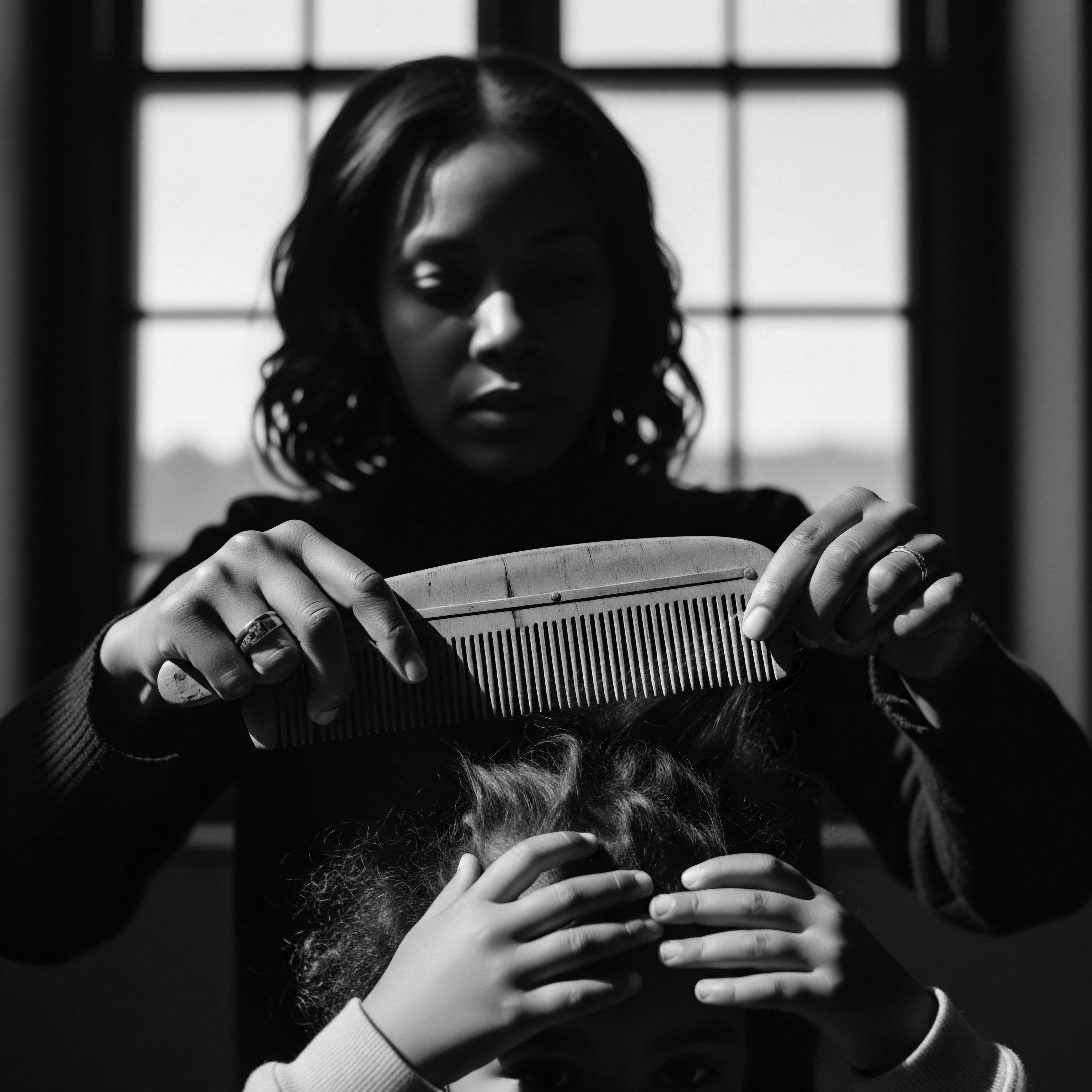
Relay
Having journeyed through the foundational understanding of textured hair and the ritualistic application of ancestral oils, we arrive at a space where the profound interplay of science, culture, and heritage converges. How do these ancient botanical allies, born of specific landscapes and traditions, continue to shape not only the physical health of textured hair but also its enduring cultural narratives and its future trajectory? This is a space for deeper reflection, for tracing the subtle yet powerful currents that connect a past rooted in indigenous wisdom to a present grappling with evolving beauty standards, all while reaffirming the inherent strength and beauty of textured hair.
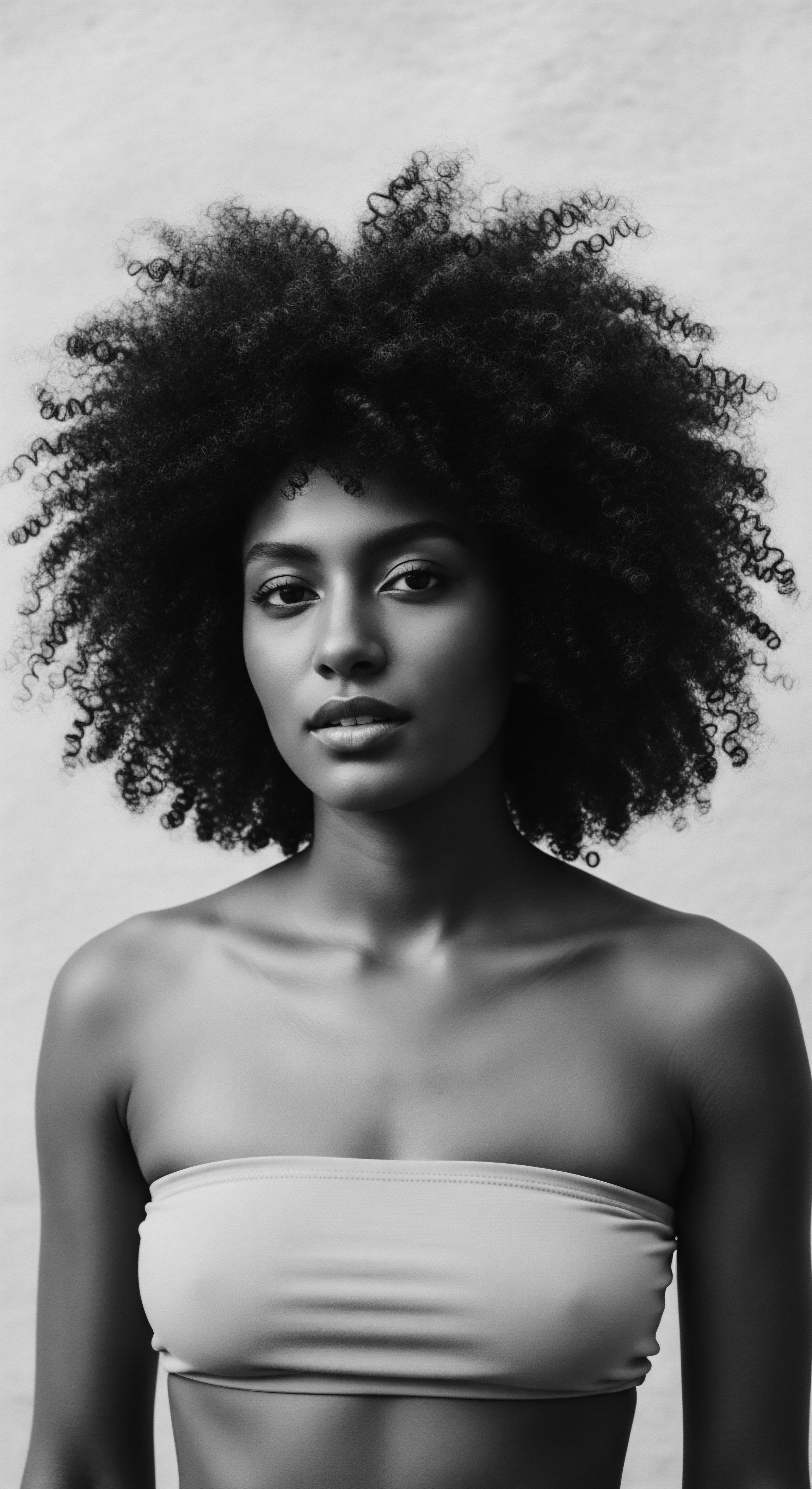
How Do Ancestral Oils Support Hair Biology?
The efficacy of ancestral oils in nourishing textured hair is not simply anecdotal; it is increasingly supported by a scientific understanding of their biochemical composition and interaction with hair anatomy. Textured hair, with its unique elliptical cross-section and often fewer cuticle layers, is particularly susceptible to moisture loss. Sebum, the scalp’s natural oil, struggles to traverse the tight coils, leaving the hair shaft, especially the ends, vulnerable to dryness and breakage.
Ancestral oils, often rich in fatty acids, vitamins, and antioxidants, address these specific vulnerabilities. For example, Shea Butter, a cornerstone of West African hair care, is replete with oleic, stearic, linoleic, and palmitic acids. These fatty acids contribute to its emollient properties, creating a protective barrier on the hair shaft that seals in moisture and reduces trans-epidermal water loss from the scalp. (Beauty Garage, 2024) This barrier helps to mitigate the environmental stressors that can compromise hair integrity, such as harsh sun or dry air.
Similarly, Jamaican Black Castor Oil, with its high concentration of ricinoleic acid, has been observed to promote scalp circulation, a factor often linked to healthier hair growth. (Husn Beauty, 2024) While the exact mechanisms are still being explored, the traditional roasting process of JBCO is believed to increase its alkaline content, which some theorize enhances its ability to open the cuticle and deliver nutrients more effectively. This speaks to an intuitive understanding of chemistry long before formal scientific inquiry.
Beyond direct application, the broader nutritional landscape of ancestral diets played a role in hair health. Diets rich in essential vitamins, minerals, and proteins, often sourced from local, unprocessed foods, directly supported healthy hair growth cycles. (Almohanna et al. 2019) For instance, adequate intake of zinc, copper, and various B vitamins, often found in traditional African diets, are known to support hair follicle function and keratin production.
(Almohanna et al. 2019) This holistic approach, where external oiling complemented internal nourishment, created a powerful synergy for hair vitality.
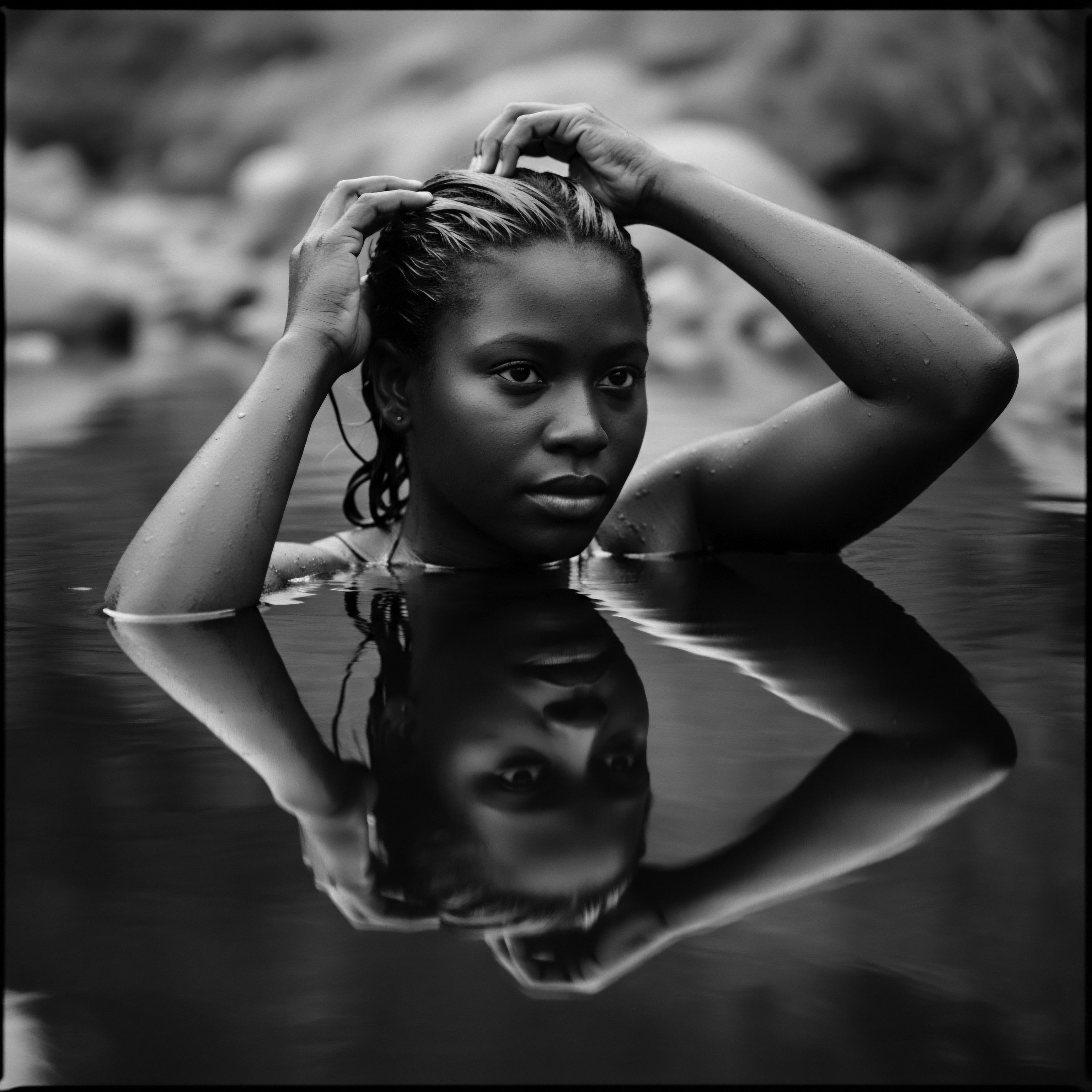
What Cultural Echoes Do These Oils Carry?
The journey of ancestral oils from indigenous lands to global recognition is a powerful testament to cultural resilience. During the transatlantic slave trade, the deliberate act of shaving the heads of enslaved Africans was a brutal attempt to strip away identity and culture. (Monmouth University, 2025) Yet, the knowledge of hair care, including the use of available oils and butters, persisted.
On plantations, despite unimaginable hardship, enslaved individuals found ways to maintain their hair, often on Sundays, using whatever grease or oil was at hand, including butter or goose grease. (Monmouth University, 2025) This continuity, even in the face of profound oppression, speaks to the deep cultural significance of hair and the ancestral practices surrounding it.
The reclamation of ancestral hair care practices, particularly in the natural hair movement, is a powerful contemporary expression of heritage. This movement, which gained significant momentum in the 1960s with the “Black is Beautiful” ethos, encouraged a rejection of Eurocentric beauty standards that often deemed textured hair “unacceptable.” (Omez Beauty Products, 2024) The embrace of oils like shea butter and castor oil became an act of self-love and a statement of authenticity, connecting individuals to a lineage of resilience and beauty. (Substack, 2025)
The continued reverence for ancestral oils is a profound act of cultural reclamation, re-establishing a connection to historical practices and identity.
A poignant example of this enduring heritage is found in the practices of the Basara women of Chad, who traditionally use a mixture containing Chebe powder along with oils to maintain their remarkable hair length. This ritual, passed down through generations, is not just about the product itself but the dedication and time invested in consistent care. As Nsibentum, a hair specialist from Congo-Brazzaville, notes, the long hair of Chadian women is not solely due to Chebe as a “miracle product,” but also to the “time you spend on regular care.” (Premium Beauty News, 2024) This underscores the truth that ancestral hair care is a testament to consistent, mindful engagement, a profound cultural legacy.
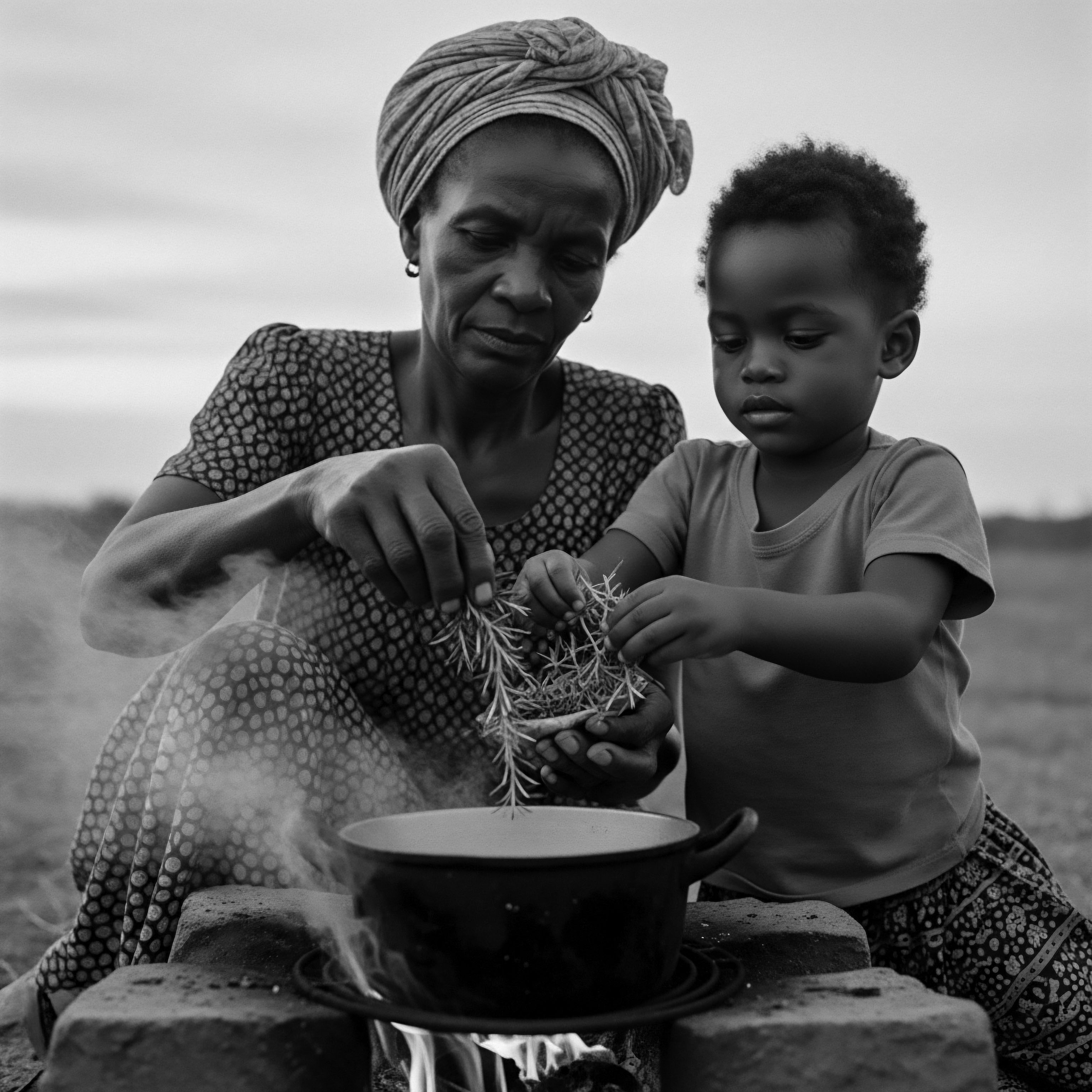
How Do These Practices Inform Our Future?
The knowledge gleaned from ancestral oil use provides a blueprint for the future of textured hair care. It highlights the importance of:
- Moisture Retention ❉ Prioritizing ingredients that effectively seal in moisture, acknowledging the unique structural needs of coiled hair.
- Scalp Health ❉ Recognizing the scalp as the foundation for healthy hair, and utilizing oils with anti-inflammatory and nourishing properties.
- Gentle Handling ❉ Emphasizing practices that minimize manipulation and breakage, echoing the protective styling traditions of the past.
- Holistic Wellness ❉ Understanding that hair health is interconnected with overall well-being, including nutrition and stress management, as implicitly understood by ancestral communities.
The ongoing research into ethnobotany and the plant-derived compounds used in traditional hair care is a vital bridge between ancient wisdom and modern scientific validation. It allows for a deeper understanding of why these ancestral oils still nourish, not just physically, but as potent symbols of identity, continuity, and the enduring power of heritage.
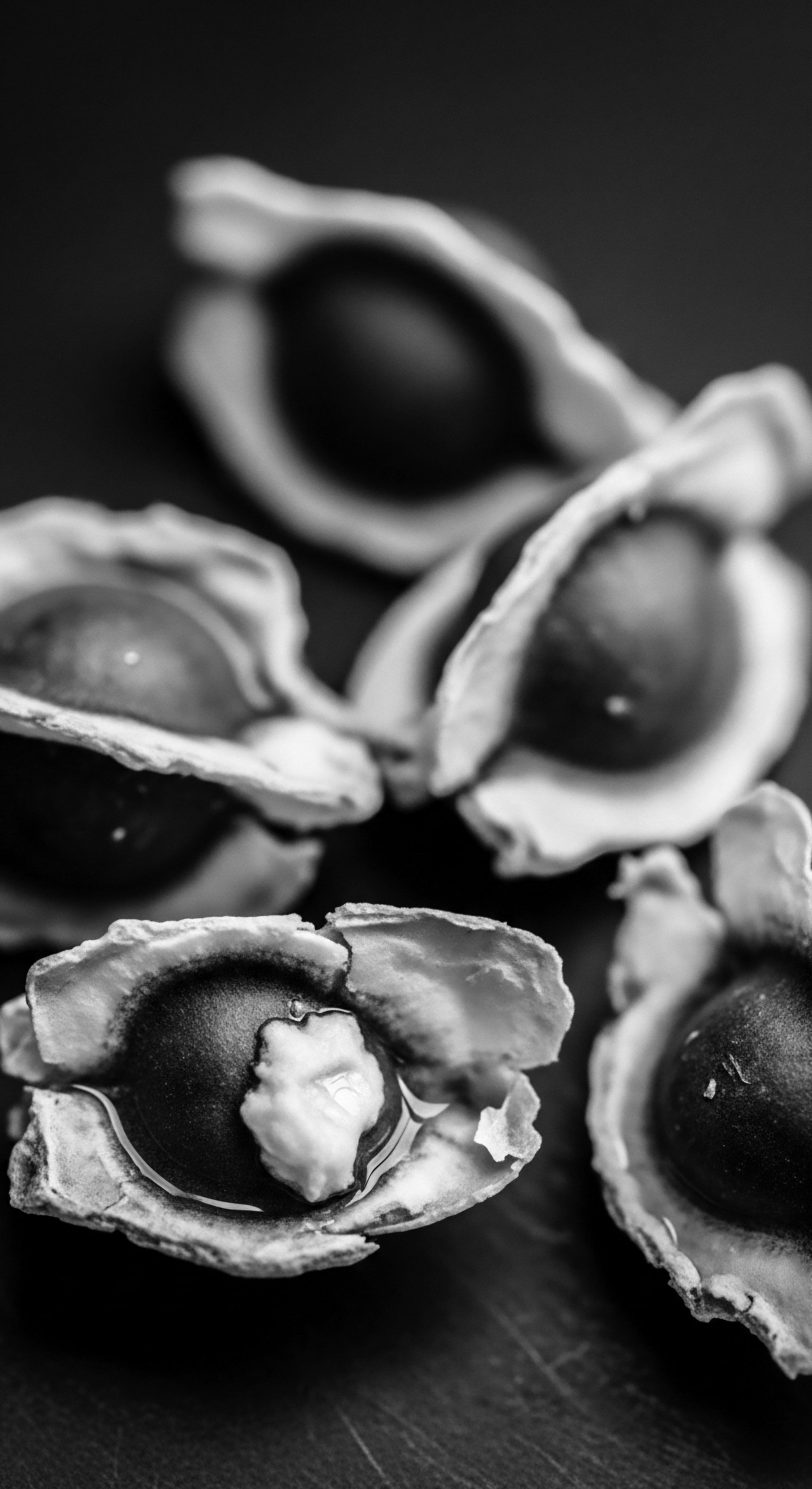
Reflection
To consider what ancestral oils still nourish textured hair is to engage in a conversation across centuries, a dialogue with the hands that tended to strands long before our time. It is a profound meditation on the enduring heritage of Black and mixed-race hair, recognizing it not as a trend, but as a living archive of resilience, creativity, and self-possession. Each drop of shea, each whisper of castor, carries within it the memory of sun-drenched rituals, of community bonds strengthened through shared care, and of an unwavering connection to the earth’s generosity. The ‘Soul of a Strand’ ethos reminds us that our hair is more than just protein; it is a conduit to our past, a vibrant expression of who we are, and a luminous beacon guiding us towards a future where its inherent beauty is not just accepted, but deeply revered.
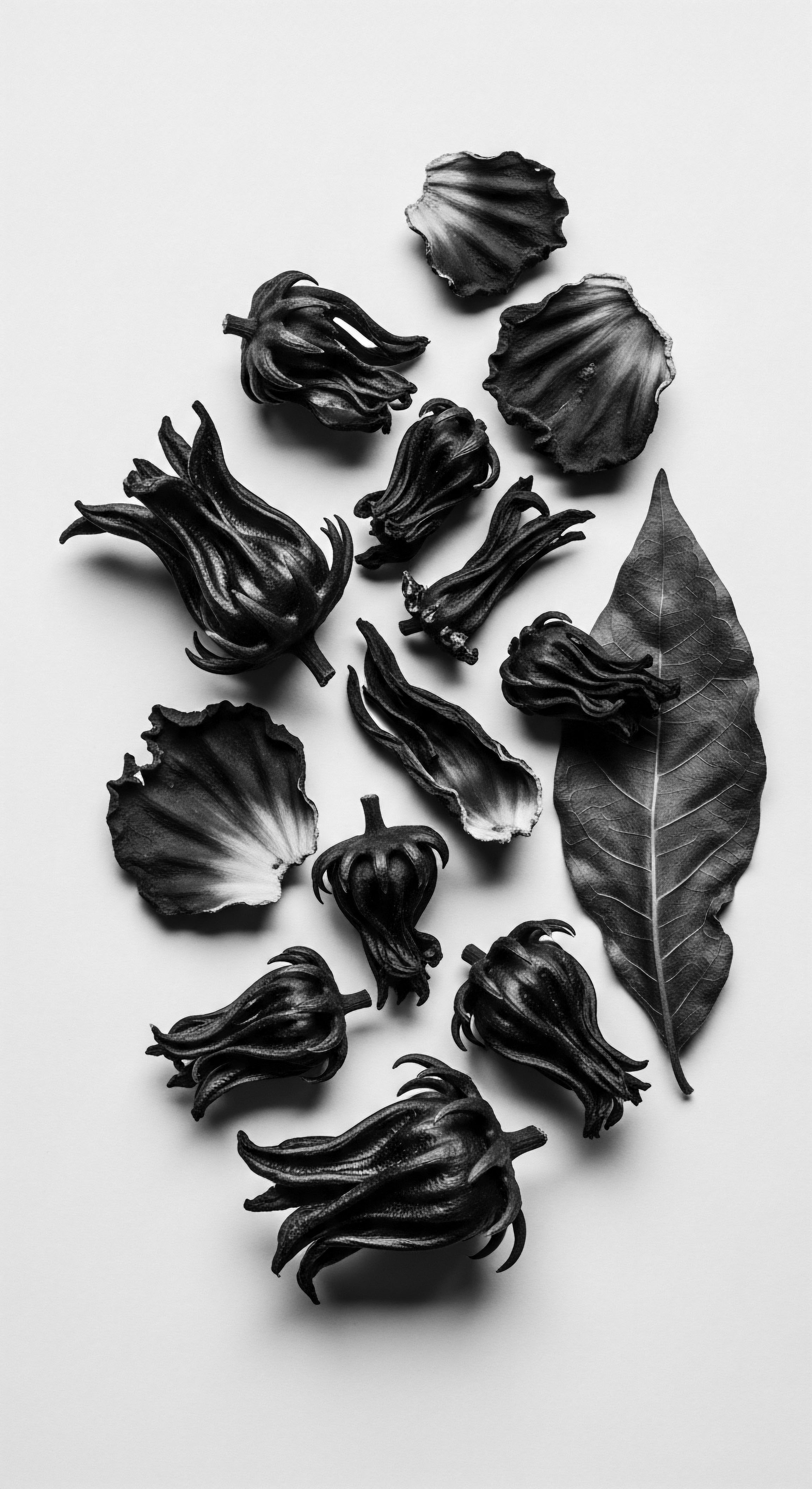
References
- Almohanna, H. M. Ahmed, A. A. Tsatalis, E. & Tosti, A. (2019). The Role of Vitamins and Minerals in Hair Loss ❉ A Review. Dermatology and Therapy, 9(1), 51-70.
- Beauty Garage. (2024). Shea Story .
- BeautyMatter. (2025). The Untold Story of Jojoba Oil in Black Beauty .
- Caribbean Secrets Cosmetics Store. (2022). Haitian Black Castor Oil .
- Cécred. (2025). Understanding Hair Oiling ❉ History, Benefits & More .
- Dabiri, E. (2020). Twisted ❉ The Tangled History of Black Hair Culture. Harper Perennial.
- Guo, E. L. & Wang, J. (2017). The Role of Nutrition in Hair Loss. Journal of Clinical and Aesthetic Dermatology, 10(12), 29-33.
- Husn Beauty. (2024). From Roots to Beard ❉ How Jamaican Black Castor Oil Transforms Grooming .
- Monmouth University. (2025). The History of Black Hair .
- Mouchane, M. Taybi, H. Gouitaa, N. & Assem, N. (2023). Ethnobotanical Survey of Medicinal Plants used in the Treatment and Care of Hair in Karia ba Mohamed (Northern Morocco). Journal of Medicinal Plants and By-products, 1(1), 22-28.
- Omez Beauty Products. (2024). The Cultural Significance of Natural Hair .
- Premium Beauty News. (2024). Ancestral hair-paste ritual gains new life in Chad .
- Rele, J. S. & Mohile, R. B. (2003). Effect of mineral oil, sunflower oil, and coconut oil on prevention of hair damage. Journal of Cosmetic Science, 54(2), 175-192.
- Substack. (2025). Ancestral Hair Rituals to Nourish Your Hair and Soul .
- Urban Hydration. (2023). History of Jamaican Castor Oil and How We Use the Ingredient in our Products .
